- Choosing the Right Variety of Red Cabbage
- Preparing the Soil
- Planting Red Cabbage
- Tips for Growing Red Cabbage
- Choose the Right Location
- Prepare the Soil
- Start Seeds Indoors
- Transplant Seedlings
- Provide Adequate Water
- Fertilize Regularly
- Pest and Disease Control
- Harvesting
- Storage
- Choose the Right Variety
- Consider Your Climate
- Size and Shape
- Flavor and Texture
- Resistance to Pests and Diseases
- Availability and Suitability
- Prepare the Soil
- 1. Choose a sunny location
- 2. Clear the area
- 3. Test the soil
- 4. Amend the soil
- 5. Loosen the soil
- 6. Remove any clumps and break up large soil particles
- 7. Level the soil
- 8. Water the soil
- Planting Red Cabbage
- Choose a suitable location
- Prepare the soil
- Sow the seeds or transplant seedlings
- Watering and fertilizing
- Pest and disease control
- Harvesting
- Watering and Mulching
- Fertilizing Red Cabbage
- Soil Testing
- Organic Fertilizers
- Macronutrients
- Micronutrients
- Application
- Fertilizing Schedule
- Conclusion
- Controlling Pests and Diseases
- 1. Monitor for pests regularly
- 2. Use natural predators and beneficial insects
- 3. Practice crop rotation
- 4. Mulch and weed regularly
- 5. Practice good sanitation
- 6. Use organic pest control methods
- 7. Provide proper plant nutrition
- 8. Monitor for signs of diseases
- 9. Provide proper air circulation
- Harvesting Red Cabbage
- Timing
- Visual Cues
- Size
- Cutting Method
- Storage
- Using the Leaves
- Enjoying Your Harvest
- Storing and Using Red Cabbage
- Storing Red Cabbage:
- Using Red Cabbage:
- Benefits of Red Cabbage:
- “Question-Answer”
- What is red cabbage?
- How do I start growing red cabbage?
- What are the ideal growing conditions for red cabbage?
- When is the best time to plant red cabbage?
- How often should I water red cabbage?
- Are there any common pests or diseases that affect red cabbage?
- “Video” 5 Cabbage Growing Mistakes to AVOID
Growing your own vegetables can be a rewarding experience, and red cabbage is a versatile and nutritious addition to any vegetable garden. Whether you are a beginner or an experienced gardener, cultivating red cabbage can be a fun and fulfilling project. In this article, we will provide you with some useful tips and techniques on how to successfully grow red cabbage in your garden.
Choosing the Right Variety of Red Cabbage
Before starting your red cabbage garden, it is important to choose the right variety of red cabbage. Different varieties have different characteristics, such as size, shape, and taste. Some varieties are better suited for specific climates or growing conditions. To ensure a successful harvest, do some research and choose a variety that is suitable for your region and gardening style.
Preparing the Soil
Red cabbage thrives in well-drained, fertile soil. Before planting, prepare the soil by removing any weeds or rocks. Break up the soil with a garden fork or tiller to improve drainage and aeration. Adding organic matter, such as compost or well-rotted manure, can help enrich the soil and provide necessary nutrients for your red cabbage plants. Test the soil pH and adjust if necessary to ensure optimal growing conditions.
Planting Red Cabbage
Red cabbage can be started from seeds or transplants. If starting from seeds, sow them directly into the garden in early spring or late summer, depending on your growing zone. Sow the seeds about 1/4 inch deep and keep the soil consistently moist until germination occurs. Once the seedlings are 3-4 inches tall, thin them to allow proper spacing of about 12-18 inches between plants.
If using transplants, set them into the garden after the last frost date. Dig a hole slightly larger than the root ball and gently place the transplant into the hole. Backfill with soil, firming it gently around the base of the plant. Water the transplants thoroughly after planting to help them establish in their new environment.
Tip: To promote healthy root development, sprinkle some slow-release fertilizer or compost around the plants.
Providing Proper Care
Red cabbage requires consistent moisture throughout the growing season, but be careful not to overwater, as excessive moisture can lead to root rot. Water the plants deeply once or twice a week, depending on the weather conditions. Consider using mulch around the plants to help retain soil moisture and prevent weed growth.
Red cabbage is a heavy feeder and will benefit from regular fertilization. Apply a balanced fertilizer every 4-6 weeks or use compost tea for a natural alternative. Be sure to follow the package instructions for proper application rates. Additionally, monitor the plants for any signs of pests or diseases, and take appropriate measures to control them if necessary.
By following these tips and providing proper care, you can enjoy a successful harvest of red cabbage from your vegetable garden. Whether you plan to use it in salads, stir-fries, or as a side dish, growing your own red cabbage will not only save you money but also allow you to enjoy the freshness and flavor of homegrown produce.
Tips for Growing Red Cabbage
Choose the Right Location
Red cabbage thrives in full sun, so choose a location in your vegetable garden that receives at least 6-8 hours of direct sunlight every day. The soil should be well-draining, with a pH level between 6.0 and 7.0.
Prepare the Soil
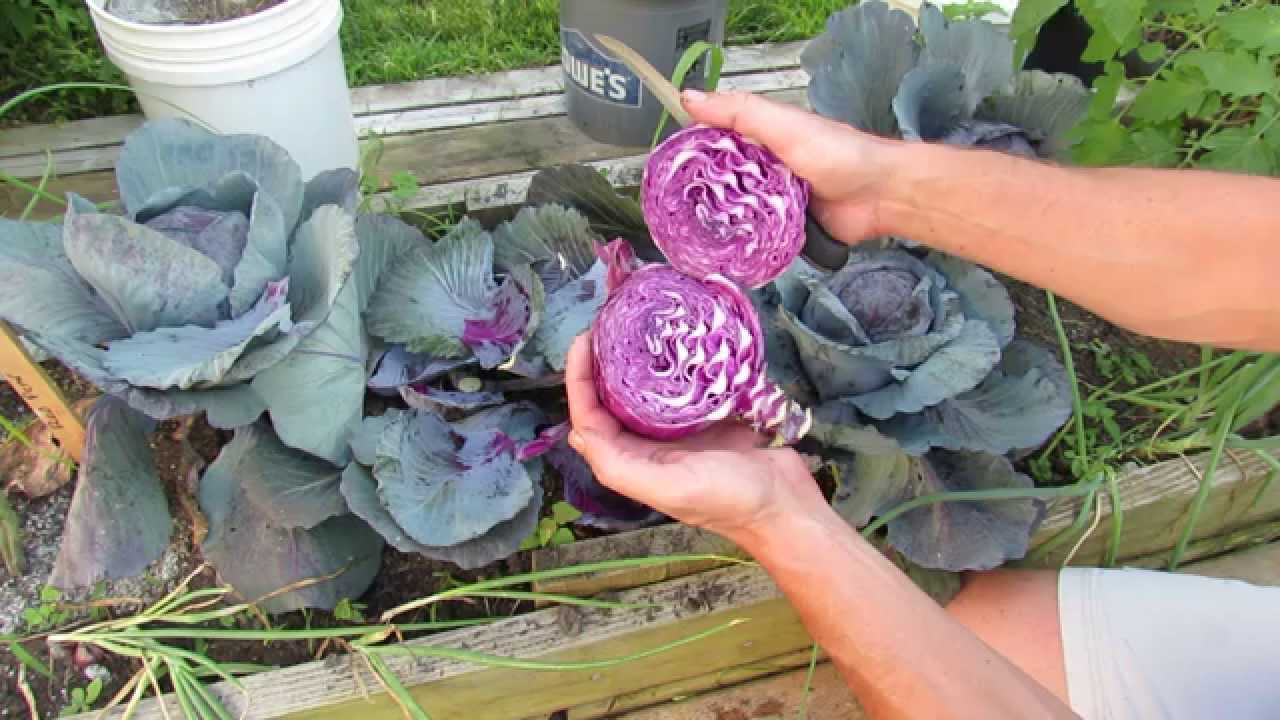
Before planting red cabbage, prepare the soil by removing any weeds or debris and loosening it to a depth of at least 12 inches. Amend the soil with compost or well-rotted manure to improve its fertility and drainage.
Start Seeds Indoors
To get a head start on the growing season, start red cabbage seeds indoors about 6-8 weeks before the last frost date. Use seed trays or pots filled with seed-starting mix, and keep them in a warm location with good light until the seedlings emerge.
Transplant Seedlings
Once the seedlings have grown their first true leaves, they can be transplanted outdoors. Choose a cloudy day or late afternoon to minimize transplant shock. Space the seedlings at least 18-24 inches apart to allow room for growth.
Provide Adequate Water
Red cabbage needs consistent moisture to grow, so water the plants regularly, especially during dry periods. Aim to keep the soil evenly moist but not waterlogged. Mulching around the plants can help retain moisture and suppress weeds.
Fertilize Regularly
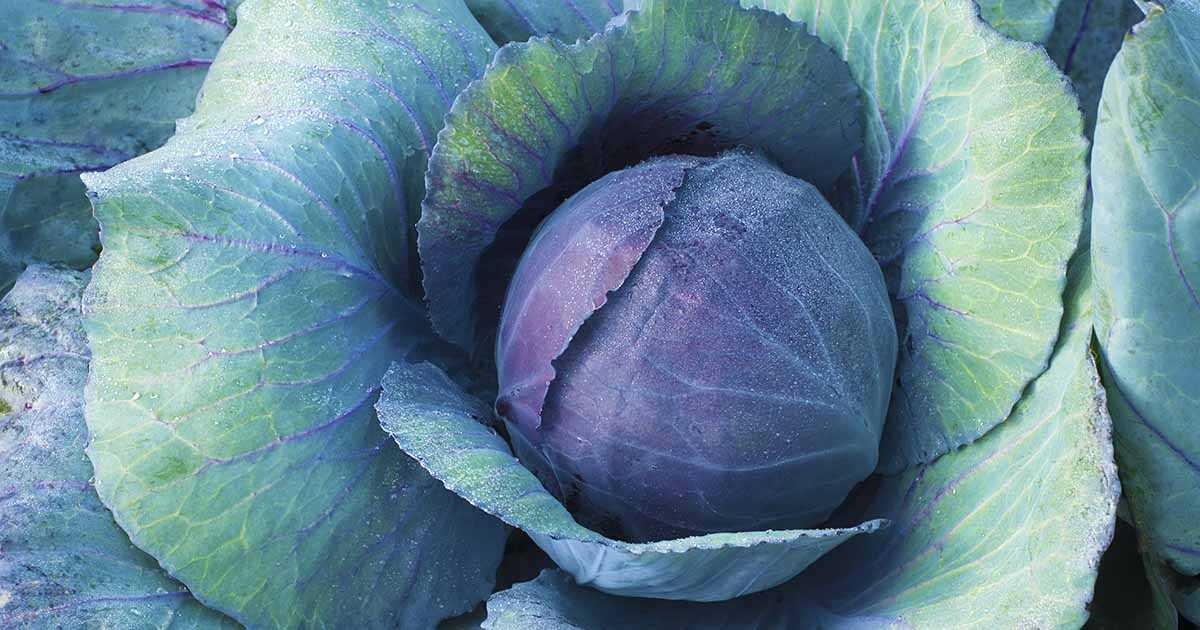
Red cabbage is a heavy feeder, so fertilize the plants regularly throughout the growing season. Use a balanced fertilizer that is high in nitrogen to promote leafy growth. Follow the manufacturer’s instructions for dosage and frequency.
Pest and Disease Control
Monitor your red cabbage plants for common pests like cabbage worms, aphids, and slugs. Use organic pest control methods such as hand-picking, insecticidal soap, or natural predators. Avoid planting red cabbage in the same spot each year to prevent the buildup of soil-borne diseases.
Harvesting
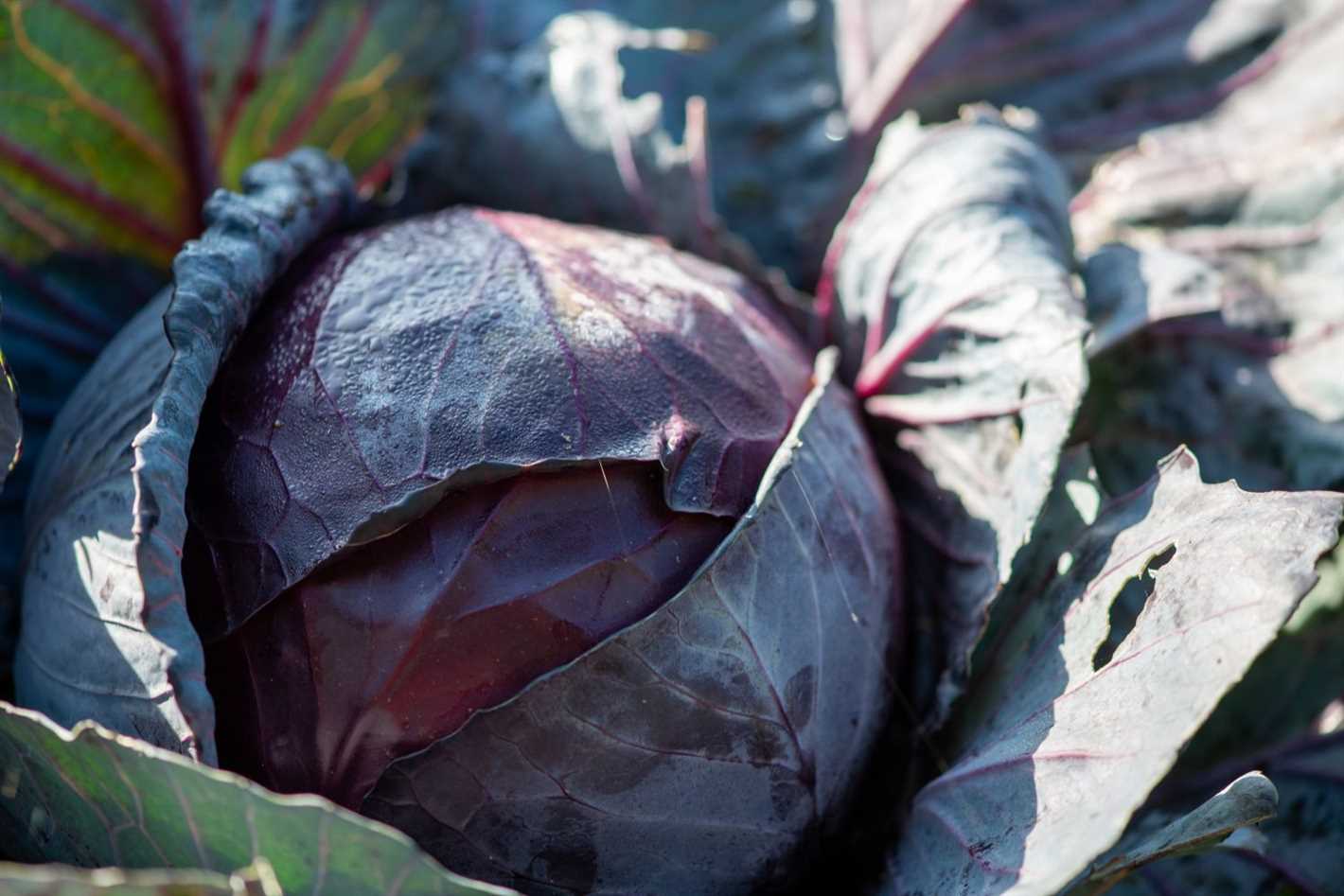
Red cabbage is ready to harvest when the heads feel firm and have reached their desired size, usually around 70-90 days after transplanting. Cut the heads off at the base with a sharp knife, leaving a few outer leaves attached for protection.
Storage
To store red cabbage, remove any damaged or loose outer leaves, and place the heads in a cool, dry location. They can last for several weeks if stored properly. Alternatively, you can blanch and freeze the cabbage for longer-term storage.
By following these tips, you can successfully grow red cabbage in your vegetable garden and enjoy its delicious and nutritious harvest!
Choose the Right Variety
When it comes to growing red cabbage in your vegetable garden, it’s important to choose the right variety. There are several different types of red cabbage available, each with its own unique qualities and characteristics. By selecting the right variety for your specific needs and growing conditions, you’ll be well on your way to successfully cultivating red cabbage.
Consider Your Climate
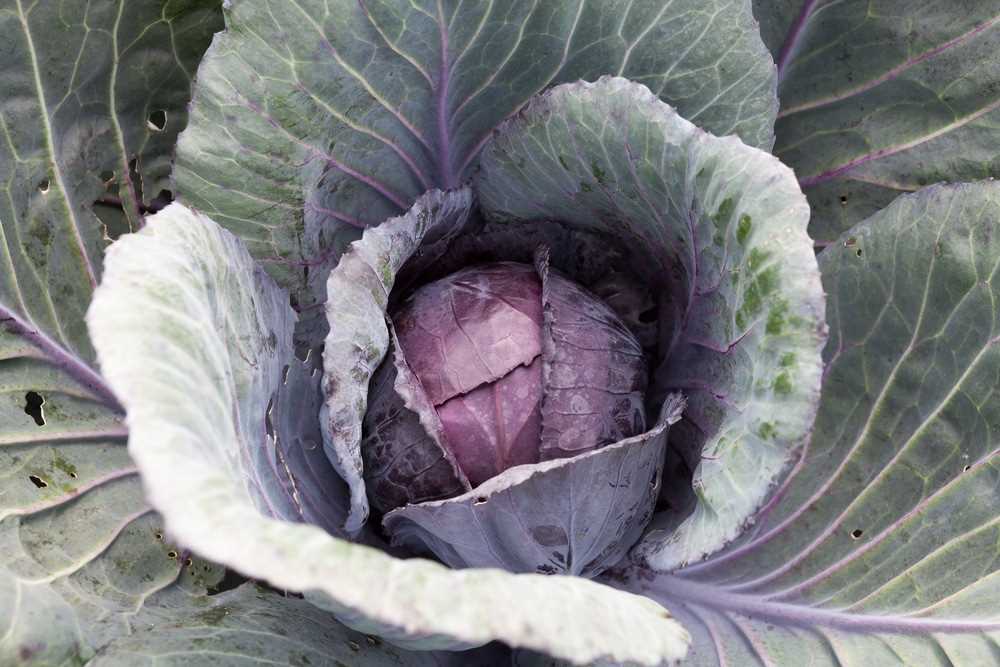
One important factor to consider when choosing a red cabbage variety is your climate. Some varieties of red cabbage are more cold-hardy than others, meaning they are better suited for growing in cooler climates. If you live in an area with colder temperatures or a shorter growing season, look for varieties that are specifically bred for cold climates.
Size and Shape
Red cabbage varieties can vary in size and shape. Some varieties produce larger heads of cabbage, while others are more compact. Consider how much space you have in your garden and how much cabbage you plan to harvest. If you have limited space or only need a small amount of cabbage, look for compact varieties that won’t take up too much room in your garden.
Flavor and Texture
The flavor and texture of red cabbage can also vary between different varieties. Some varieties are known for their mild flavor and tender leaves, while others have a stronger and more robust taste. Consider your personal preference and how you plan to use the cabbage in your cooking. If you prefer a milder flavor, look for varieties that are specifically bred for their sweeter taste.
Resistance to Pests and Diseases
Another important factor to consider is the variety’s resistance to pests and diseases. Some varieties of red cabbage are more resistant to common cabbage pests, such as cabbage worms and aphids, and diseases, such as clubroot. By choosing a variety that has natural resistance to these problems, you can reduce the need for chemical pesticides and increase your chances of a successful harvest.
Availability and Suitability
Finally, consider the availability and suitability of the variety in your region. Some varieties may be more commonly available in certain areas, so check with local nurseries or seed catalogs to see what options are available to you. Additionally, consider how well the variety has performed in your region in the past. Look for varieties that have a track record of success in your specific climate and growing conditions.
By taking the time to choose the right variety of red cabbage for your garden, you’ll give your plants the best chance of thriving and producing a bountiful harvest. Consider your climate, size and shape preferences, flavor and texture preferences, pest and disease resistance, and availability and suitability in order to make an informed decision. With the right variety, you’ll be well on your way to cultivating beautiful, tasty red cabbage in your vegetable garden.
Prepare the Soil
Before planting red cabbage in your vegetable garden, it is important to prepare the soil properly to create a favorable environment for growth. Here are some steps to take to prepare the soil for red cabbage:
1. Choose a sunny location
Red cabbage thrives in full sun, so choose a location in your garden that receives at least 6 to 8 hours of sunlight each day. This will help the plants get the energy they need for healthy growth.
2. Clear the area
Remove any weeds, rocks, or debris from the planting area. These can compete with the red cabbage for water, nutrients, and sunlight, and hinder their growth.
3. Test the soil
Use a soil testing kit to determine the pH level of your soil. Red cabbage prefers slightly acidic soil with a pH between 6.0 and 6.8. If your soil is too acidic (below 6.0), add lime to raise the pH. If it is too alkaline (above 6.8), add sulfur or peat moss to lower the pH.
4. Amend the soil
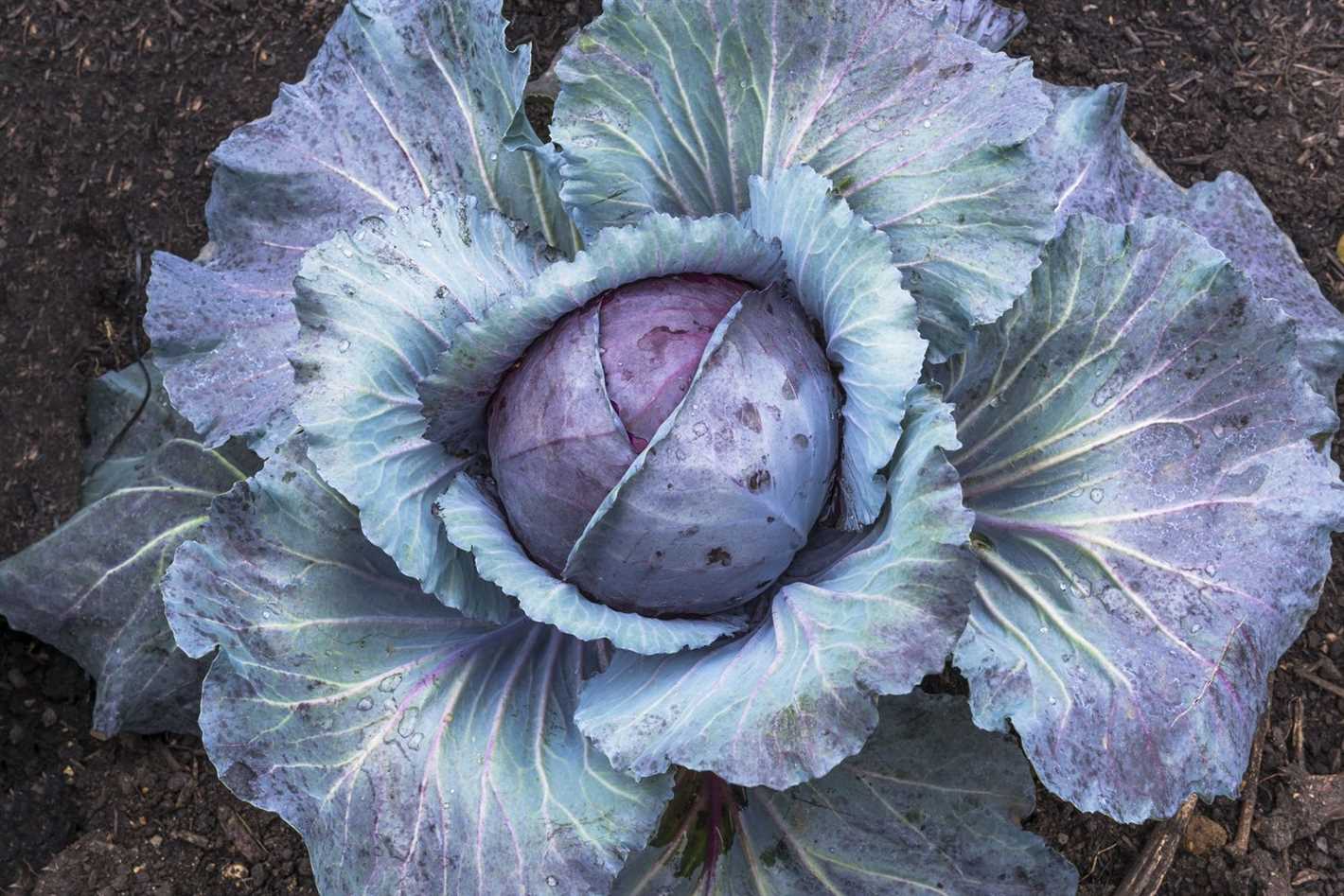
Mix in organic matter, such as compost or aged manure, into the soil to improve its fertility and drainage. Red cabbage requires well-draining soil, so amending it with organic matter will help create the ideal growing conditions.
5. Loosen the soil
Use a garden fork or tiller to loosen the soil to a depth of about 10 to 12 inches. This will improve the soil structure and allow the roots of the red cabbage to penetrate easily.
6. Remove any clumps and break up large soil particles
Break up any clumps of soil and remove large particles to create a fine, crumbly texture. This will make it easier for the red cabbage roots to spread and access nutrients.
7. Level the soil
Smooth out the surface of the soil, ensuring it is level and free from any indentations or mounds. This will make it easier to plant the red cabbage seeds or transplants evenly.
8. Water the soil
Before planting, thoroughly water the prepared soil to ensure it is moist but not waterlogged. This will help the red cabbage seeds or transplants establish quickly and encourage healthy growth.
By following these steps to prepare the soil, you can create an optimal growing environment for your red cabbage plants and increase the likelihood of a successful harvest.
Planting Red Cabbage
Choose a suitable location
Red cabbage thrives in full sun, so choose a planting location that receives at least 6-8 hours of direct sunlight per day. The soil should be well-draining and rich in organic matter.
Prepare the soil
Before planting, prepare the soil by removing any weeds or debris. Use a garden fork or tiller to loosen the soil to a depth of about 12 inches. Amend the soil with compost or well-rotted manure to improve its fertility and drainage.
Sow the seeds or transplant seedlings
You can start red cabbage from seeds indoors about 4-6 weeks before the last frost date. Sow the seeds ½ inch deep in seed trays or small pots filled with seed starting mix. Keep the soil consistently moist and provide a warm location for germination.
Once the seedlings have grown a few true leaves, they can be transplanted into the garden. Space the transplants about 12-18 inches apart in rows that are 2-3 feet apart.
If you prefer to skip the seed starting process, you can also purchase red cabbage seedlings from a nursery or garden center and transplant them directly into the garden.
Watering and fertilizing
Red cabbage requires consistently moist soil throughout the growing season. Water deeply, at least one inch per week, and adjust the amount as needed based on rainfall. Avoid overhead watering, as it can promote disease.
Fertilize the plants every 2-3 weeks with a balanced fertilizer or a fertilizer specifically formulated for cabbage. Follow the package instructions for the appropriate dosage.
Pest and disease control
Red cabbage is susceptible to a variety of pests and diseases, including cabbage worms, aphids, and clubroot. Monitor the plants regularly for any signs of pest or disease damage.
If pests are present, you can use organic pest control methods such as handpicking, insecticidal soaps, or insecticides approved for use on cabbage. For diseases like clubroot, practice crop rotation and avoid planting cabbage in the same location for several years.
Harvesting
Red cabbage is ready for harvesting when the heads reach their mature size and feel firm to the touch. Cut the cabbage heads off at the base, leaving a few outer leaves attached. Store the harvested heads in a cool, dark place or in the refrigerator.
By following these planting tips, you can successfully grow red cabbage in your vegetable garden and enjoy the nutritious and colorful addition to your meals.
Watering and Mulching
Proper watering is essential for growing healthy red cabbage plants. The moisture requirements of red cabbage are similar to those of other cabbage varieties. It is important to keep the soil consistently moist, but not overly saturated. Irrigate the plants deeply, providing enough water to penetrate the entire root system.
One effective way to ensure proper watering is to use a drip irrigation system or soaker hoses. These methods deliver water directly to the soil, minimizing evaporation and keeping the foliage dry. Avoid overhead watering, as it can lead to fungal diseases and rot.
Mulching is another important practice when growing red cabbage. Mulch helps to conserve moisture in the soil, suppress weed growth, and regulate soil temperature. Organic mulches, such as straw, hay, or shredded leaves, are ideal for red cabbage. Apply a layer of mulch around the base of the plants, taking care to leave a small space around the stem to prevent rot.
When mulching, be sure to keep the mulch a few inches away from the base of the plants to prevent the accumulation of moisture and potential rot. Regularly check the moisture level of the soil and adjust watering and mulching practices accordingly.
Fertilizing Red Cabbage
Fertilizing red cabbage is an important step in ensuring healthy growth and a bountiful harvest. Red cabbage requires a nutrient-rich soil to thrive, so applying the right fertilizers is crucial.
Soil Testing
Before applying any fertilizer, it’s recommended to test your soil to determine its nutrient levels. You can do this by sending a soil sample to a testing lab or using a home soil testing kit. The results will help you determine which nutrients are deficient in your soil and adjust your fertilizing plan accordingly.
Organic Fertilizers
Using organic fertilizers is ideal for growing red cabbage, as they provide slow and steady nutrient release. Options such as compost, well-rotted manure, bone meal, and fish emulsion are great choices. These organic fertilizers not only feed the plants but also improve the soil structure and promote beneficial soil microorganisms.
Macronutrients
The three main macronutrients required by red cabbage are nitrogen (N), phosphorus (P), and potassium (K). Nitrogen promotes leafy growth, phosphorus supports root development, and potassium helps with overall plant health and disease resistance. A balanced fertilizer with an NPK ratio of 5-10-10 or 10-10-10 is suitable for red cabbage.
Micronutrients
In addition to macronutrients, red cabbage also needs micronutrients for optimal growth. These include calcium, magnesium, iron, manganese, zinc, copper, and boron. Adding a micronutrient-rich fertilizer or incorporating compost into the soil can help meet these requirements.
Application
When applying fertilizer, it’s essential to follow the instructions on the package. Generally, you should spread the fertilizer evenly around the plants, taking care not to let it touch the leaves or stems. After applying the fertilizer, water the plants thoroughly to help the nutrients absorb into the soil.
Fertilizing Schedule
Red cabbage plants benefit from regular fertilizing throughout their growing season. Typically, it’s recommended to fertilize the plants once every 2-3 weeks. However, it’s important to monitor the plants’ growth and adjust the fertilizing schedule accordingly.
| Week | Fertilizer |
|---|---|
| 2 | Compost |
| 4 | Well-rotted manure |
| 6 | Organic balanced fertilizer (NPK 10-10-10) |
| 8 | Fish emulsion |
Conclusion
Fertilizing red cabbage is crucial for promoting healthy growth and a successful harvest. By testing your soil, using organic fertilizers, providing the necessary macronutrients and micronutrients, and following a fertilizing schedule, you can ensure that your red cabbage plants receive the nutrition they need to thrive.
Controlling Pests and Diseases
Growing red cabbage in your vegetable garden can be rewarding, but it also comes with its fair share of challenges. Pest infestations and diseases can greatly affect the health and yield of your crops. Here are some tips on how to control pests and diseases when cultivating red cabbage:
1. Monitor for pests regularly
Regularly inspect your red cabbage plants for signs of pest infestations. Look for common pests such as aphids, cabbage worms, slugs, and snails. Early detection can help prevent pest populations from spreading and causing severe damage to your crops.
2. Use natural predators and beneficial insects
Encourage natural predators like ladybugs, lacewings, and parasitic wasps in your garden. These insects can help keep pest populations in check by feeding on them. You can also introduce beneficial insects such as nematodes, which can help control soil-borne pests.
3. Practice crop rotation
Rotate your crops each season to prevent the buildup of pests and diseases in the soil. Avoid planting red cabbage or other brassicas in the same spot for consecutive years. By rotating your crops, you can disrupt the life cycles of pests and reduce the risk of disease transmission.
4. Mulch and weed regularly
Using mulch around your red cabbage plants can help suppress weed growth and create a barrier against pests. Weeds can attract pests and compete with your crops for nutrients and water. Regularly remove weeds to maintain a clean growing area and minimize pest and disease infestations.
5. Practice good sanitation
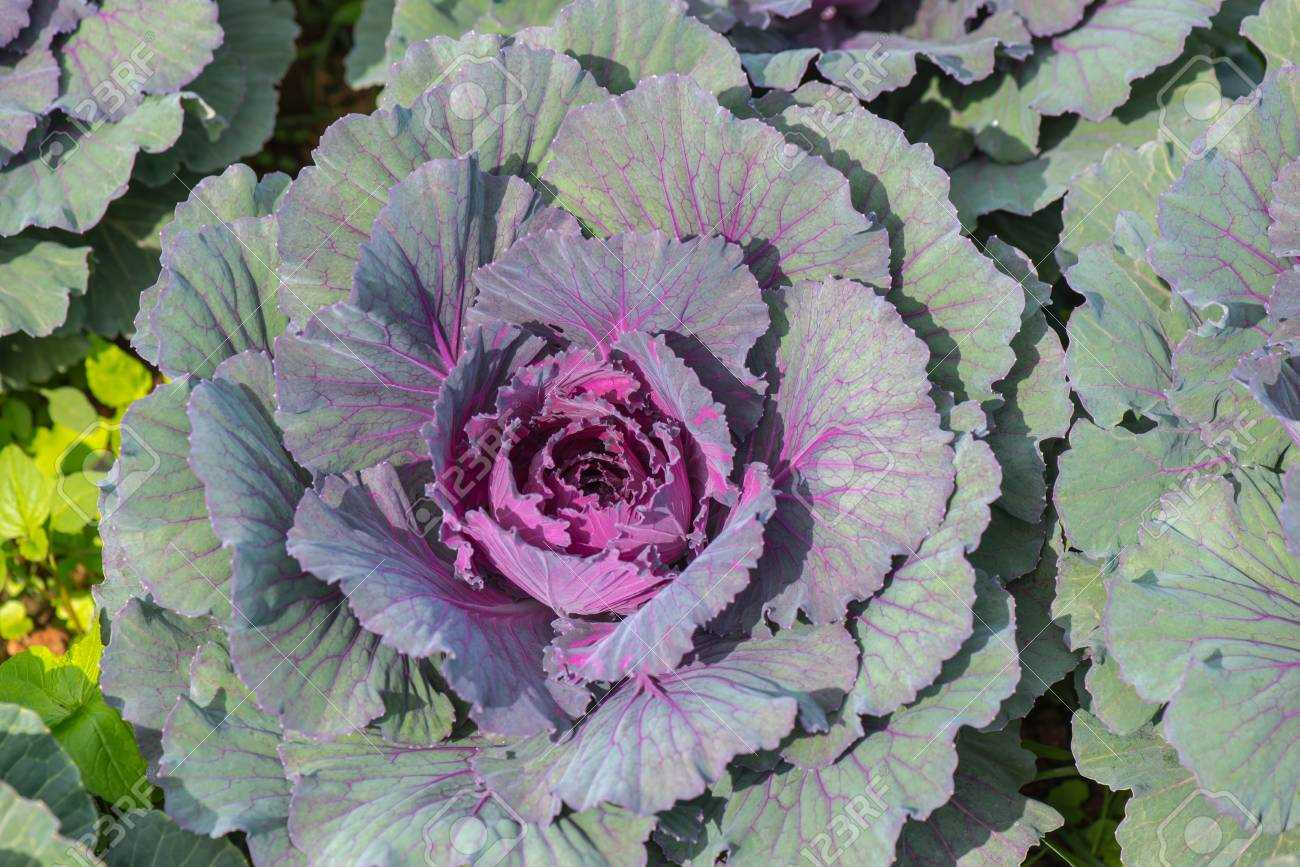
Keep your garden clean and tidy to prevent the spread of diseases. Remove and dispose of any infected or diseased plant material promptly. Regularly clean your gardening tools to prevent the transmission of diseases between plants.
6. Use organic pest control methods
Consider using organic pest control methods, such as insecticidal soaps or neem oil, to control pest populations in a safe and environmentally friendly manner. These options are less harmful to beneficial insects and can help minimize the impact on the ecosystem of your garden.
7. Provide proper plant nutrition
Ensure that your red cabbage plants receive adequate nutrition to grow strong and healthy. Proper fertilization can help improve plant resistance to pests and diseases. Use organic compost or balanced fertilizers to provide essential nutrients and maintain soil health.
8. Monitor for signs of diseases
Be vigilant for signs of diseases, such as blackleg, clubroot, or downy mildew, on your red cabbage plants. If you notice any symptoms, take immediate action to mitigate the spread of the disease. Remove and destroy infected plants to prevent further contamination.
9. Provide proper air circulation
Adequate air circulation is essential for preventing the development and spread of fungal diseases. Avoid overcrowding your red cabbage plants and ensure sufficient spacing between them. Prune any dense foliage to improve airflow and reduce the risk of fungal infections.
By following these tips, you can effectively control pests and diseases while cultivating red cabbage in your vegetable garden. Remember to monitor and address any issues promptly to ensure a successful harvest.
Harvesting Red Cabbage
Red cabbage is ready to harvest when the heads are firm and have reached their desired size. Here are some tips for harvesting red cabbage in your vegetable garden:
Timing
The timing for harvesting red cabbage depends on the variety you are growing, but it typically takes around 80 to 100 days from seed to harvest. Check the seed packet or plant label for specific guidance on maturity dates.
Visual Cues
Look for visual cues to determine if your red cabbage is ready for harvest. The heads should be dense and firm, with a vibrant red color. Avoid harvesting if the heads feel loose or if the color is dull.
Size

Red cabbage heads can vary in size, but a good rule of thumb is to wait until they are about 6 to 8 inches in diameter. This size ensures that the cabbage has had enough time to develop, but is still tender and flavorful.
Cutting Method
To harvest red cabbage, use a sharp knife to cut the head from the base, leaving a few outer leaves intact. Make a clean cut as close to the base as possible without cutting into the roots. Remove any damaged or yellowing leaves.
Storage
After harvesting, remove any remaining soil from the cabbage heads and store them in a cool, dark place with high humidity. Red cabbage can be stored for several weeks if kept in optimal conditions. You can also store individual leaves in the refrigerator for shorter periods.
Using the Leaves
Don’t let the outer leaves go to waste! Red cabbage leaves can be used in salads, stir-fries, or as a flavorful addition to soups and stews. They can also be fermented to make sauerkraut.
Enjoying Your Harvest
Once your red cabbage is harvested, you can enjoy it in a variety of dishes. Try adding it to coleslaw, roasting it with other vegetables, or sautéing it with garlic and onions as a side dish. The vibrant color and unique flavor of red cabbage will add depth to any meal.
By following these tips, you can successfully harvest and enjoy the fruits of your red cabbage labor in your vegetable garden. Happy gardening!
Storing and Using Red Cabbage
Once you have harvested your red cabbage from the garden, it’s important to store it properly to ensure it stays fresh for as long as possible. Here are some tips on storing and using red cabbage:
Storing Red Cabbage:
- Remove any damaged or yellow leaves from the cabbage.
- Wrap the red cabbage tightly in plastic wrap or place it in a plastic bag to help retain moisture.
- Store the wrapped red cabbage in the crisper drawer of your refrigerator.
- Red cabbage can typically be stored for up to two weeks in the refrigerator.
Using Red Cabbage:
Red cabbage is a versatile vegetable that can be used in a variety of dishes. Here are some ideas for using red cabbage:
- Raw: Red cabbage can be thinly sliced and used in salads or coleslaw.
- Cooked: Red cabbage can be cooked by sautéing, braising, or roasting. It pairs well with other roasted vegetables.
- Pickled: Red cabbage can be pickled to create a tangy and colorful addition to sandwiches, burgers, or tacos.
- Stir-fry: Red cabbage can be added to stir-fry dishes for added crunch and flavor.
- Soup: Red cabbage can be added to soups and stews for extra texture and color.
Benefits of Red Cabbage:
In addition to being delicious, red cabbage is also packed with nutrients. It is a great source of vitamins C and K, as well as antioxidants. Adding red cabbage to your diet can help support a healthy immune system and promote good digestion.
| Nutrient | Amount per 1 cup (89g) |
|---|---|
| Vitamin C | 56% of the Daily Value (DV) |
| Vitamin K | 20% of the DV |
| Fiber | 2g |
| Antioxidants | Anthocyanins, kaempferol, and other flavonoids |
With its vibrant color and numerous health benefits, red cabbage is a great addition to any vegetable garden. By following these tips for storing and using red cabbage, you can enjoy its crunchy texture and unique flavor all season long.
“Question-Answer”
What is red cabbage?
Red cabbage is a type of cabbage that has red or purple leaves instead of the usual green color.
How do I start growing red cabbage?
To start growing red cabbage, you can either start from seeds indoors and transplant them outside, or you can directly sow the seeds in your vegetable garden.
What are the ideal growing conditions for red cabbage?
Red cabbage thrives in cool weather and should be grown in a spot that receives full sun. The soil should be well-drained and rich in organic matter.
When is the best time to plant red cabbage?
The best time to plant red cabbage is in early spring or late summer, depending on your growing zone. This will ensure that the cabbage matures during cool weather.
How often should I water red cabbage?
Red cabbage requires consistent moisture, so it should be watered regularly. Aim to keep the soil evenly moist, but not overly saturated.
Are there any common pests or diseases that affect red cabbage?
Yes, red cabbage can be susceptible to pests such as aphids, cabbage loopers, and cabbage root maggots. Diseases like clubroot and black rot can also affect the cabbage. It’s important to take preventive measures and monitor your plants regularly.







